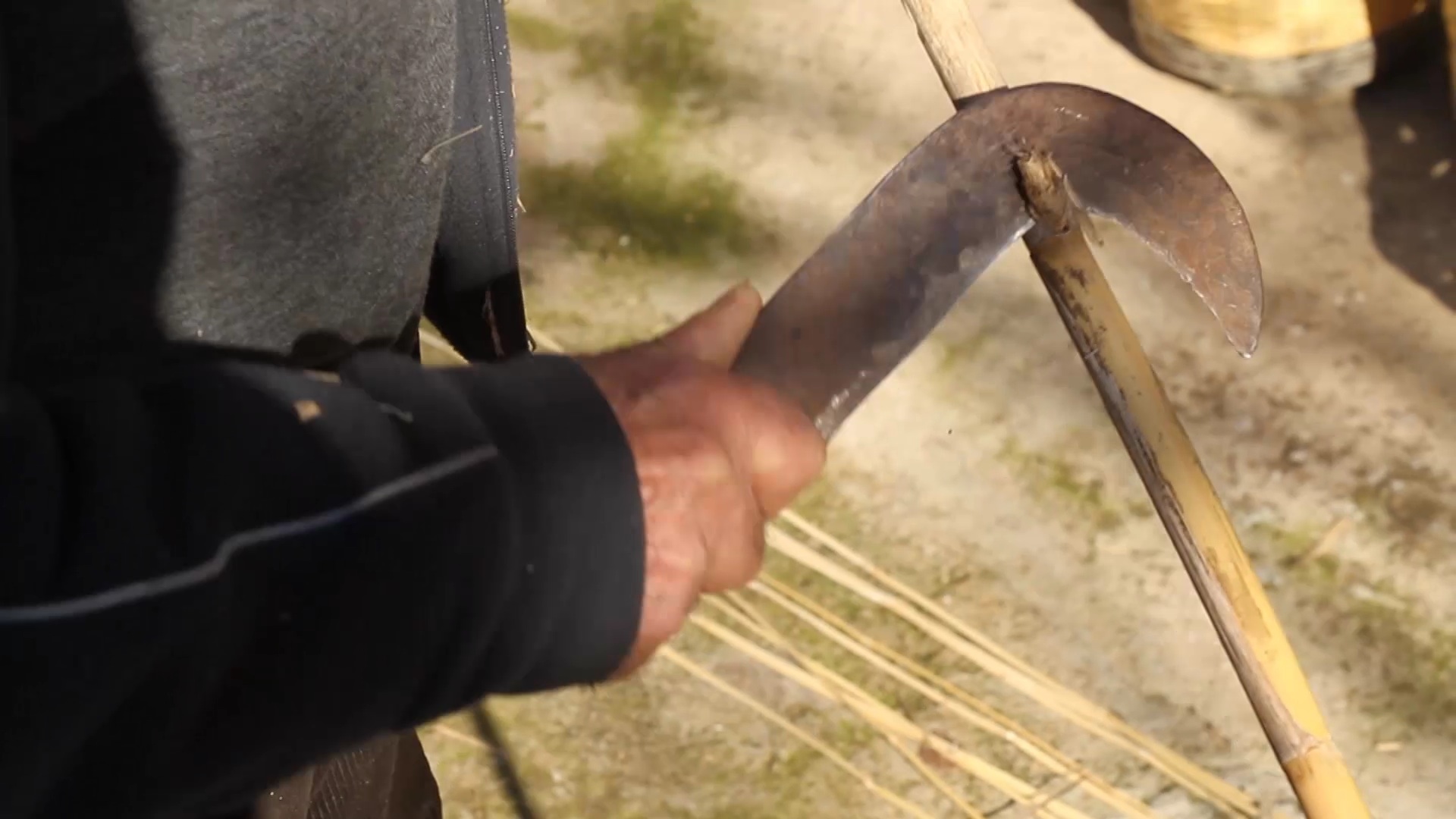
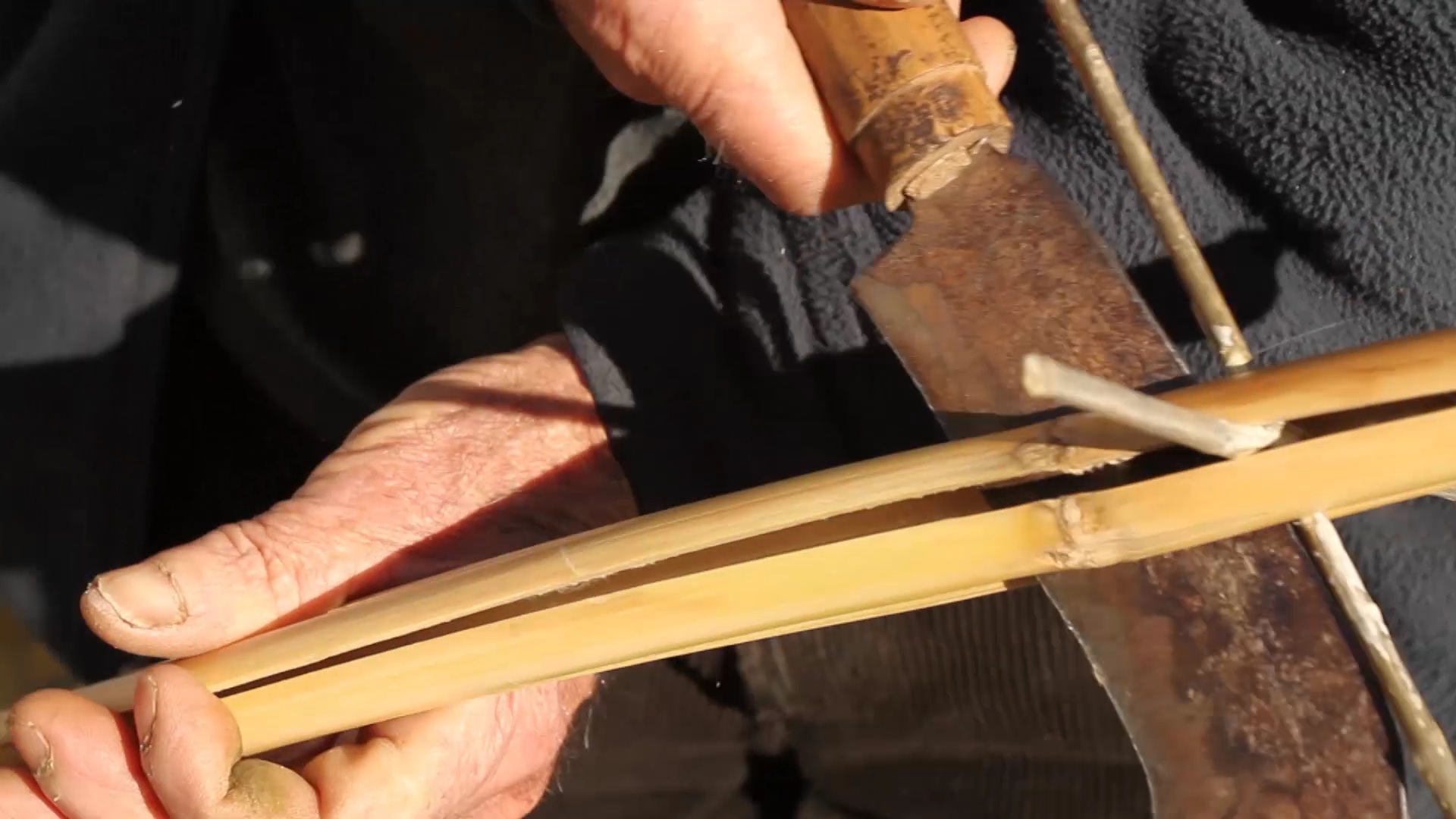
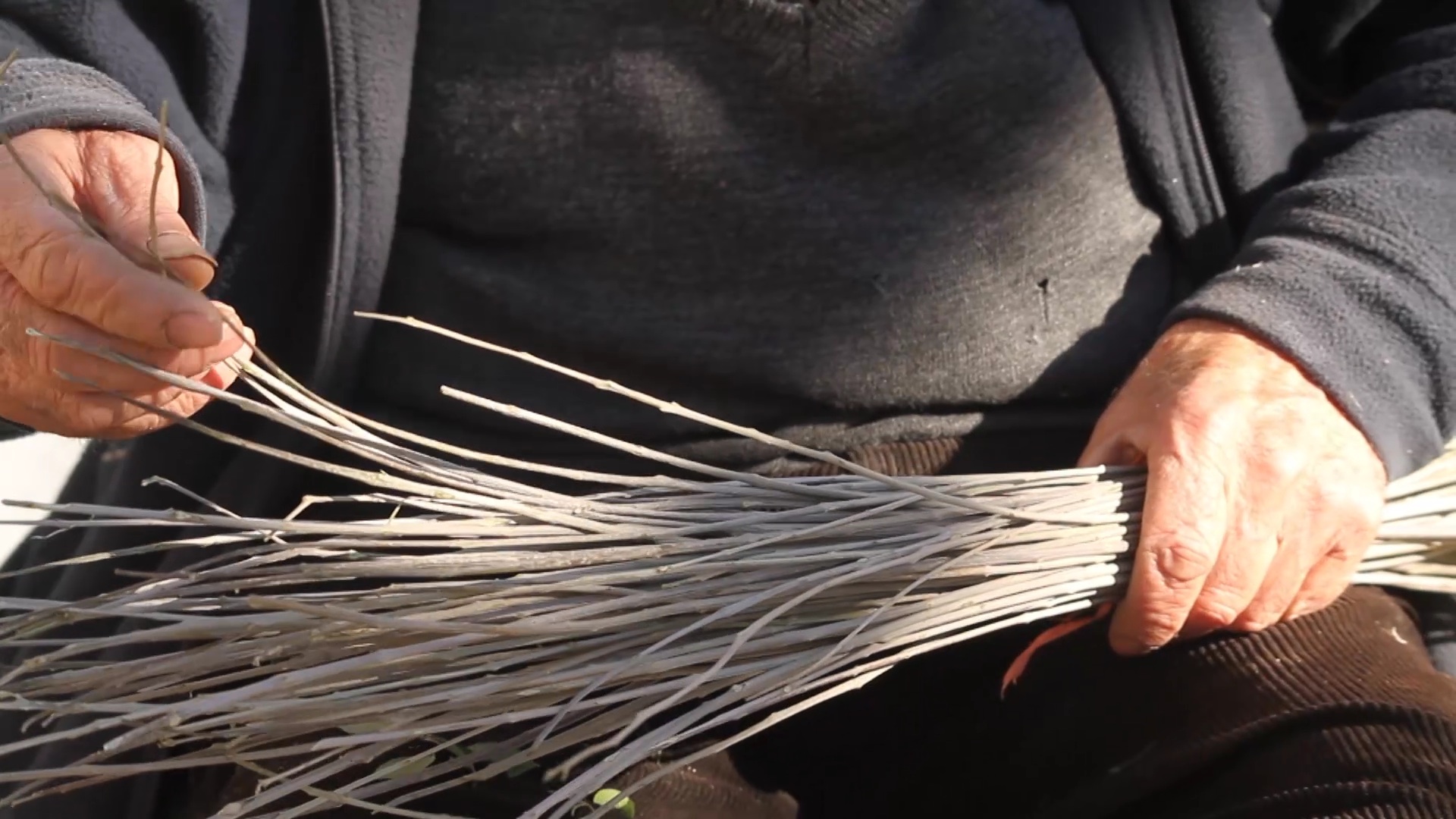
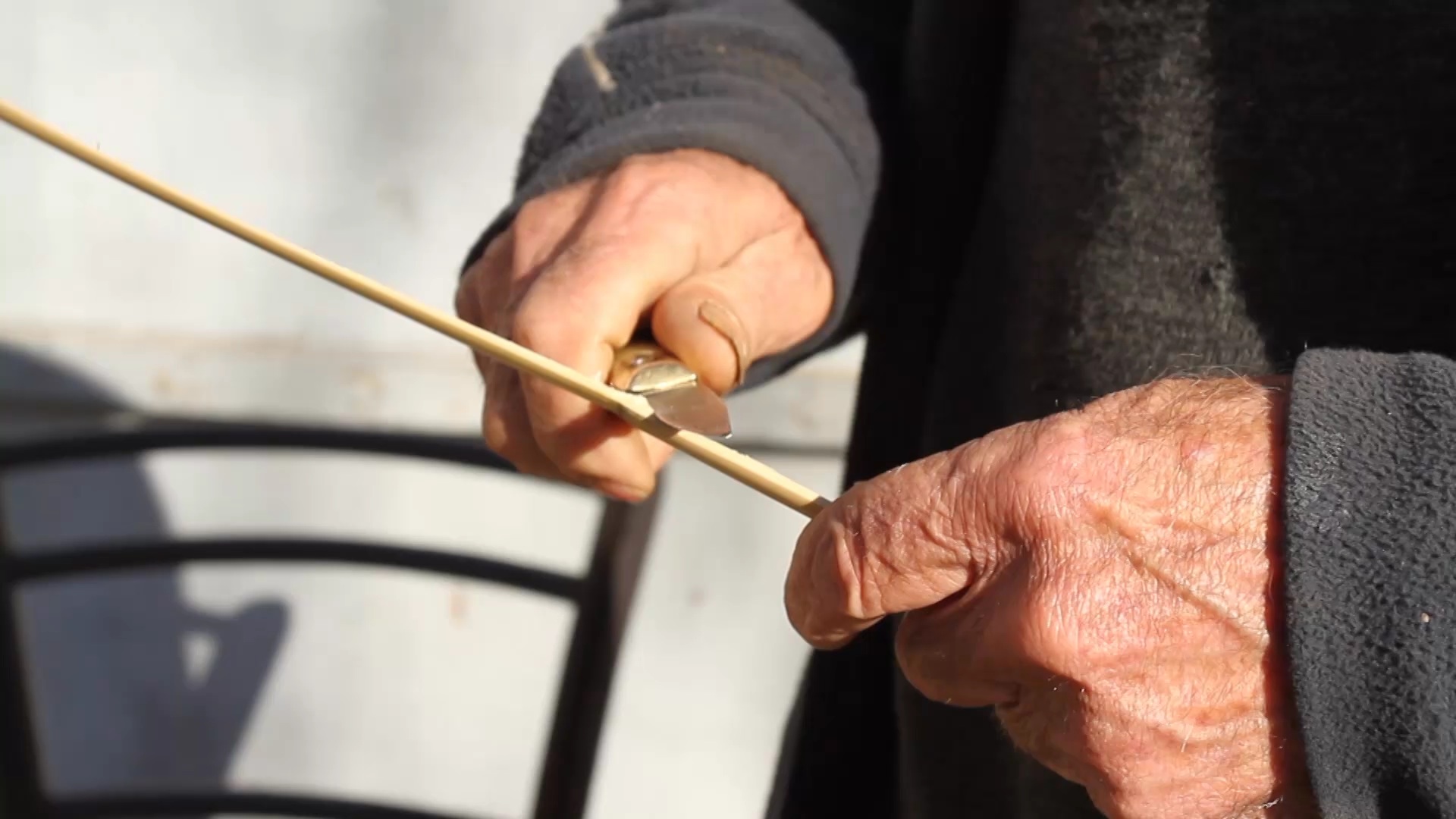
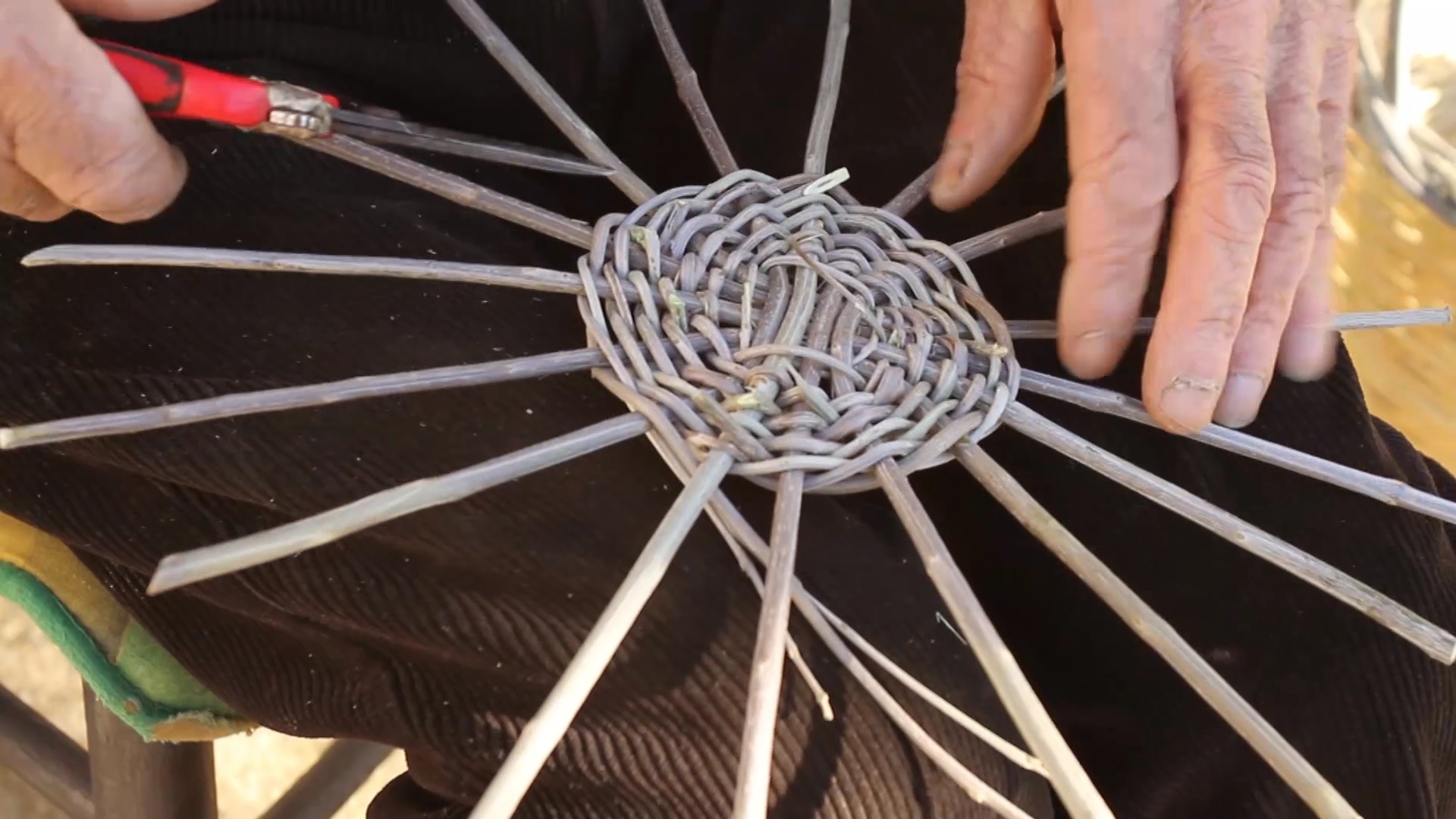
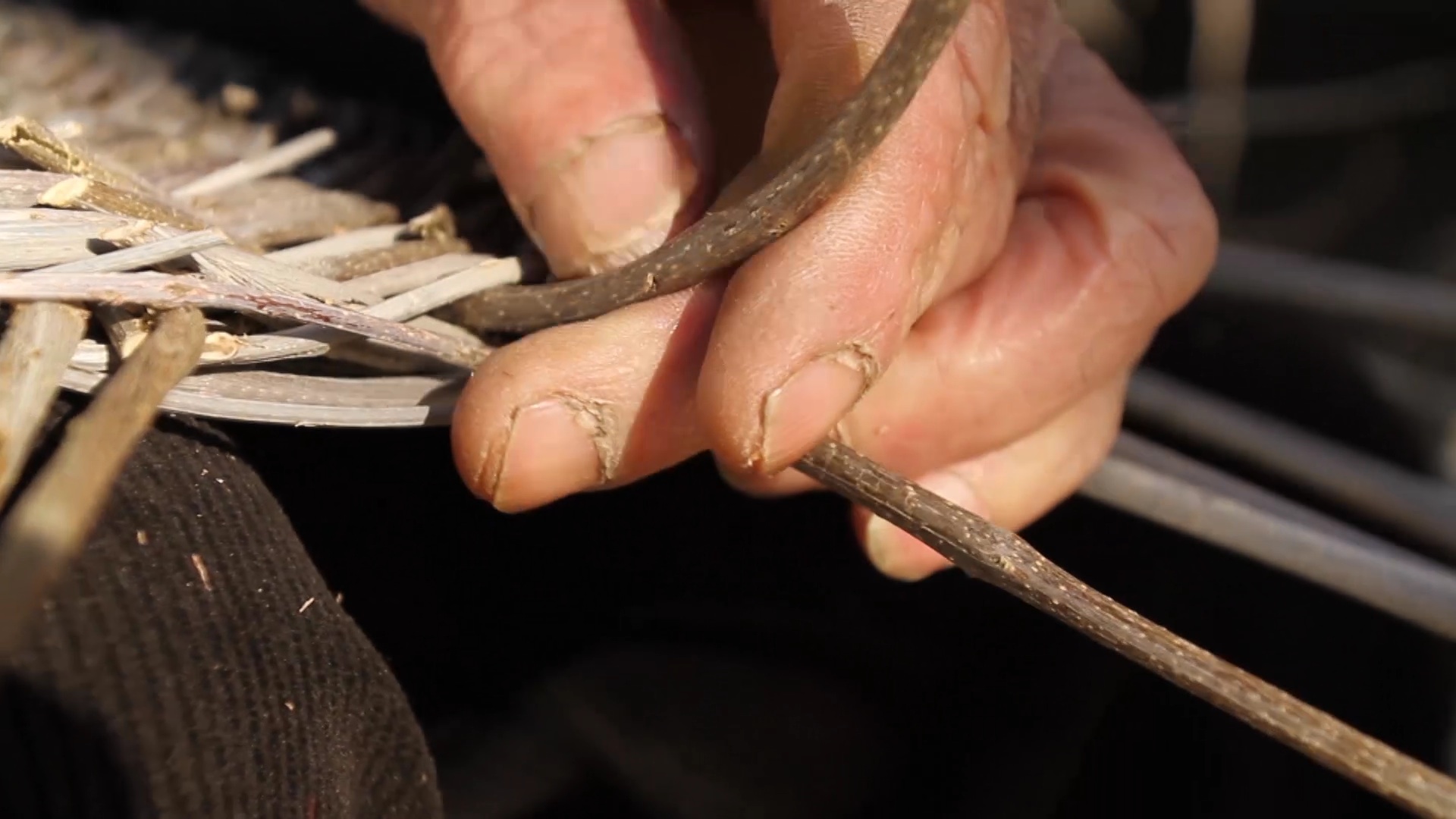
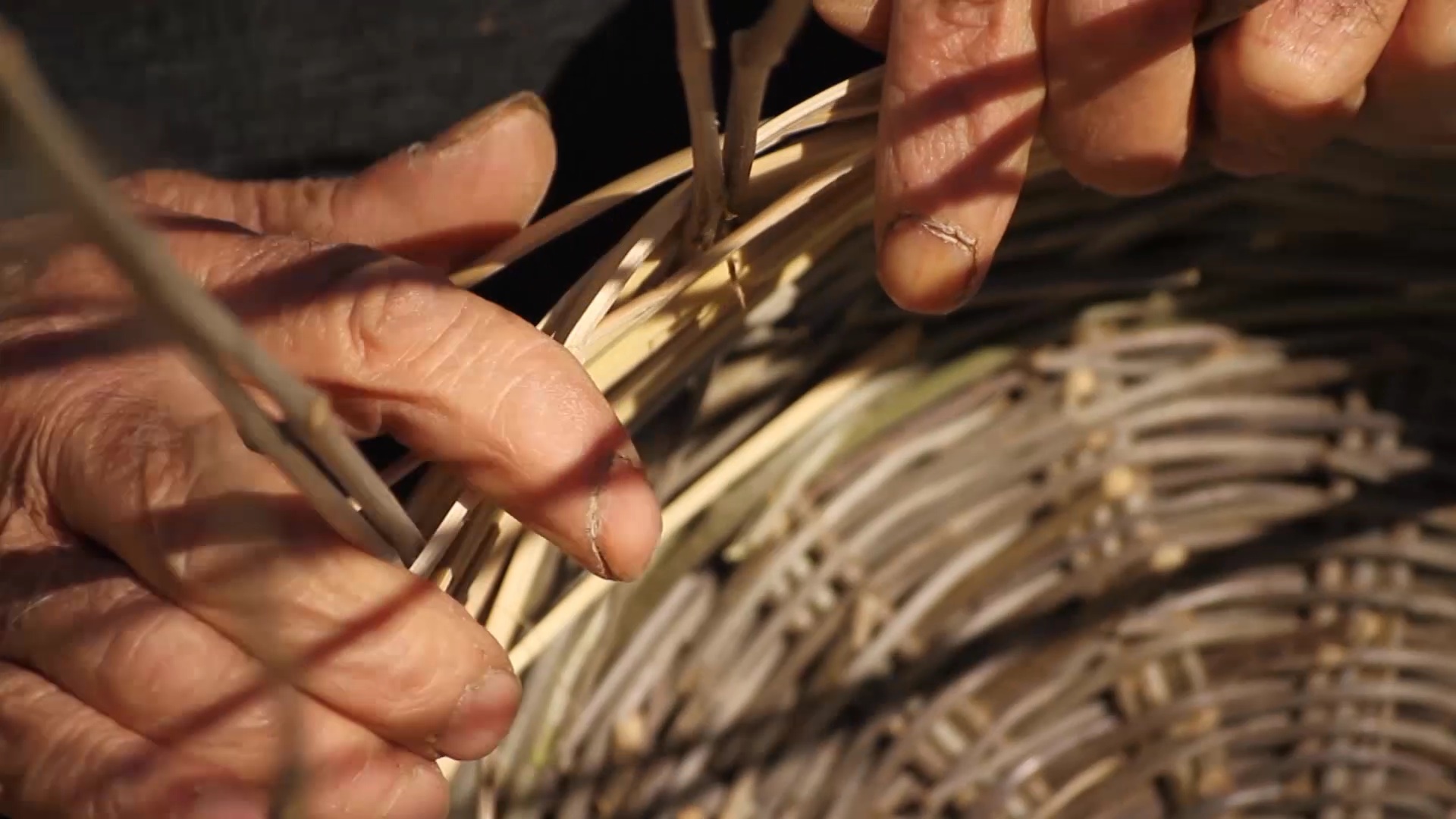
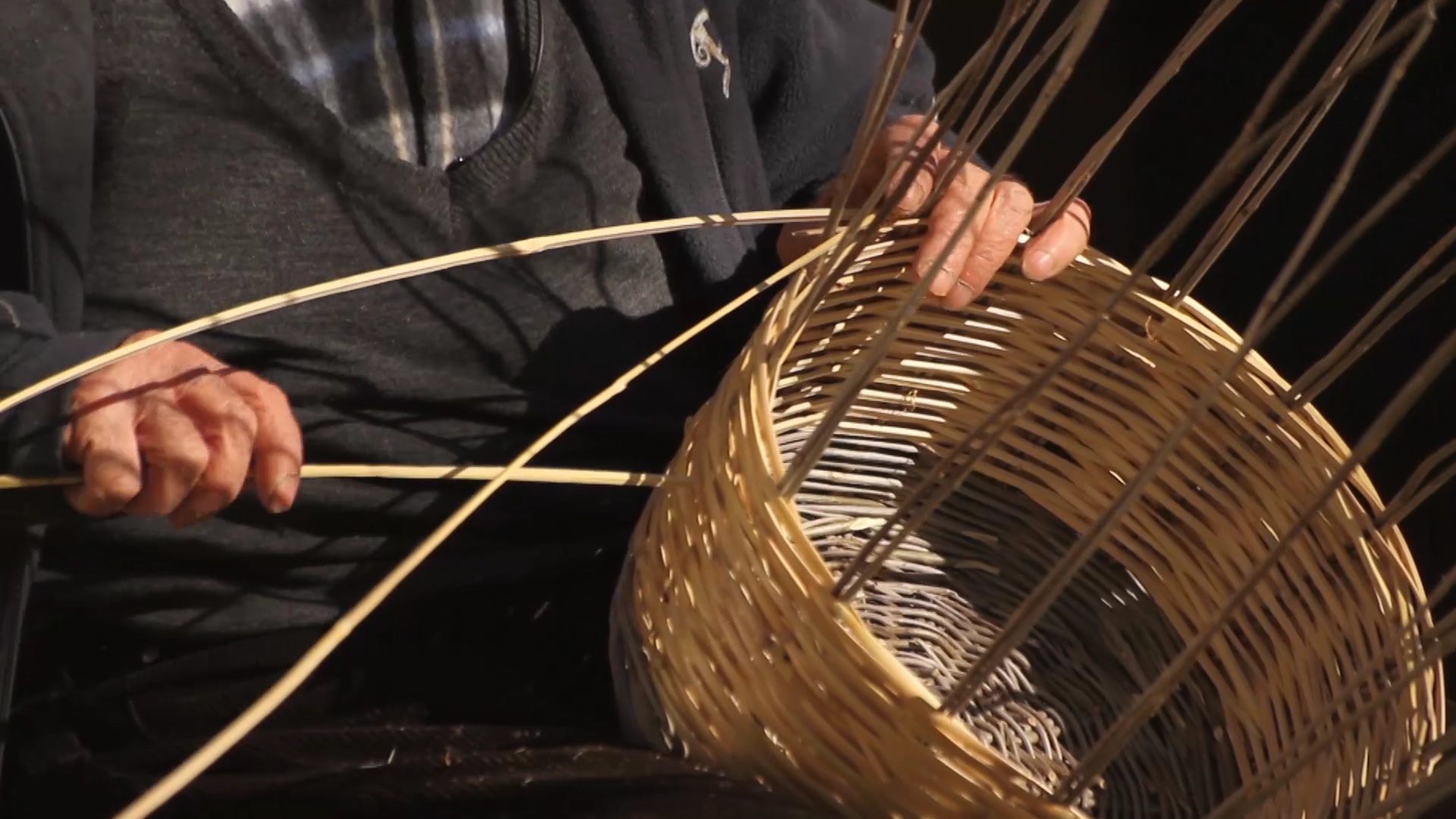

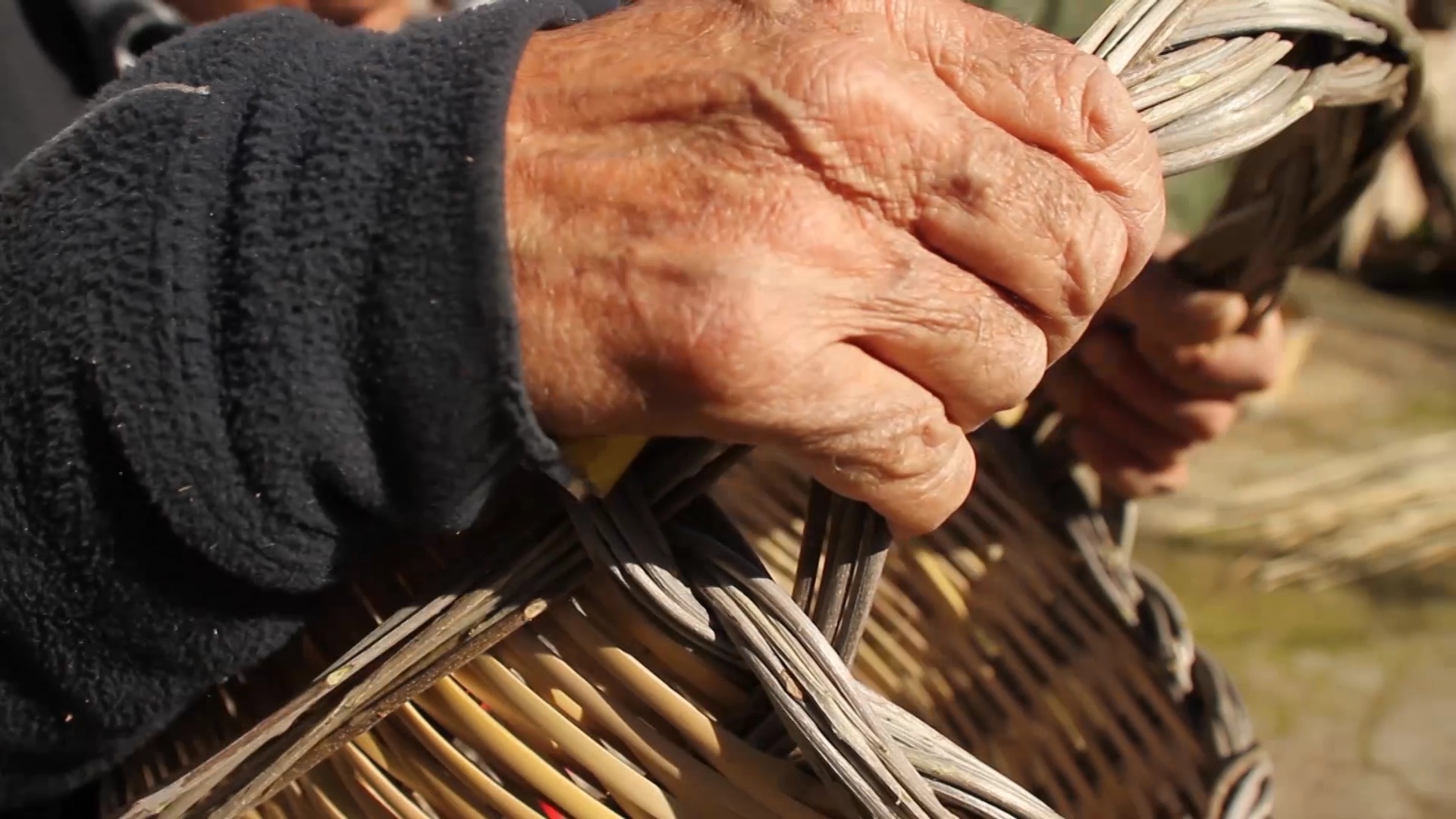
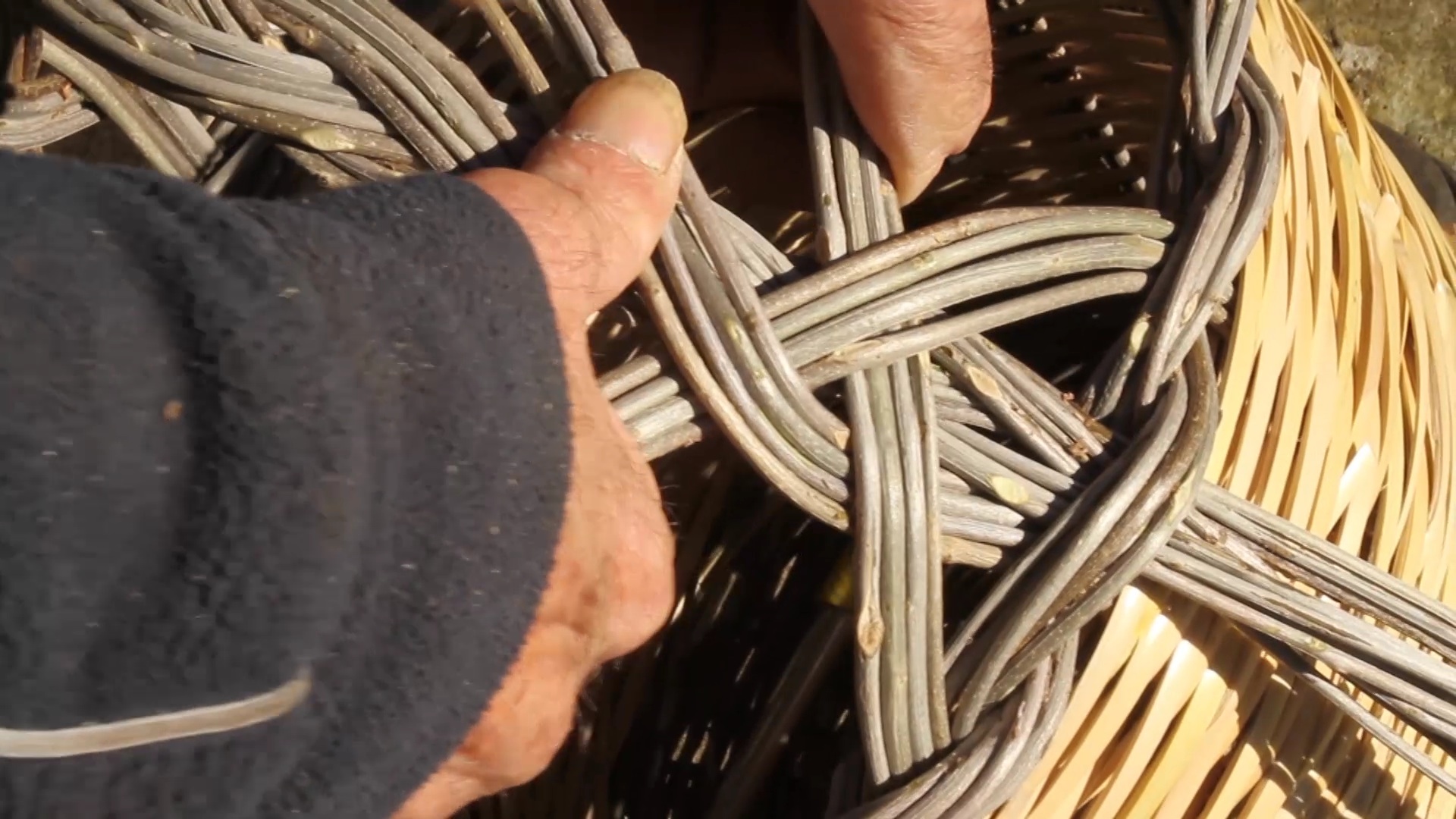
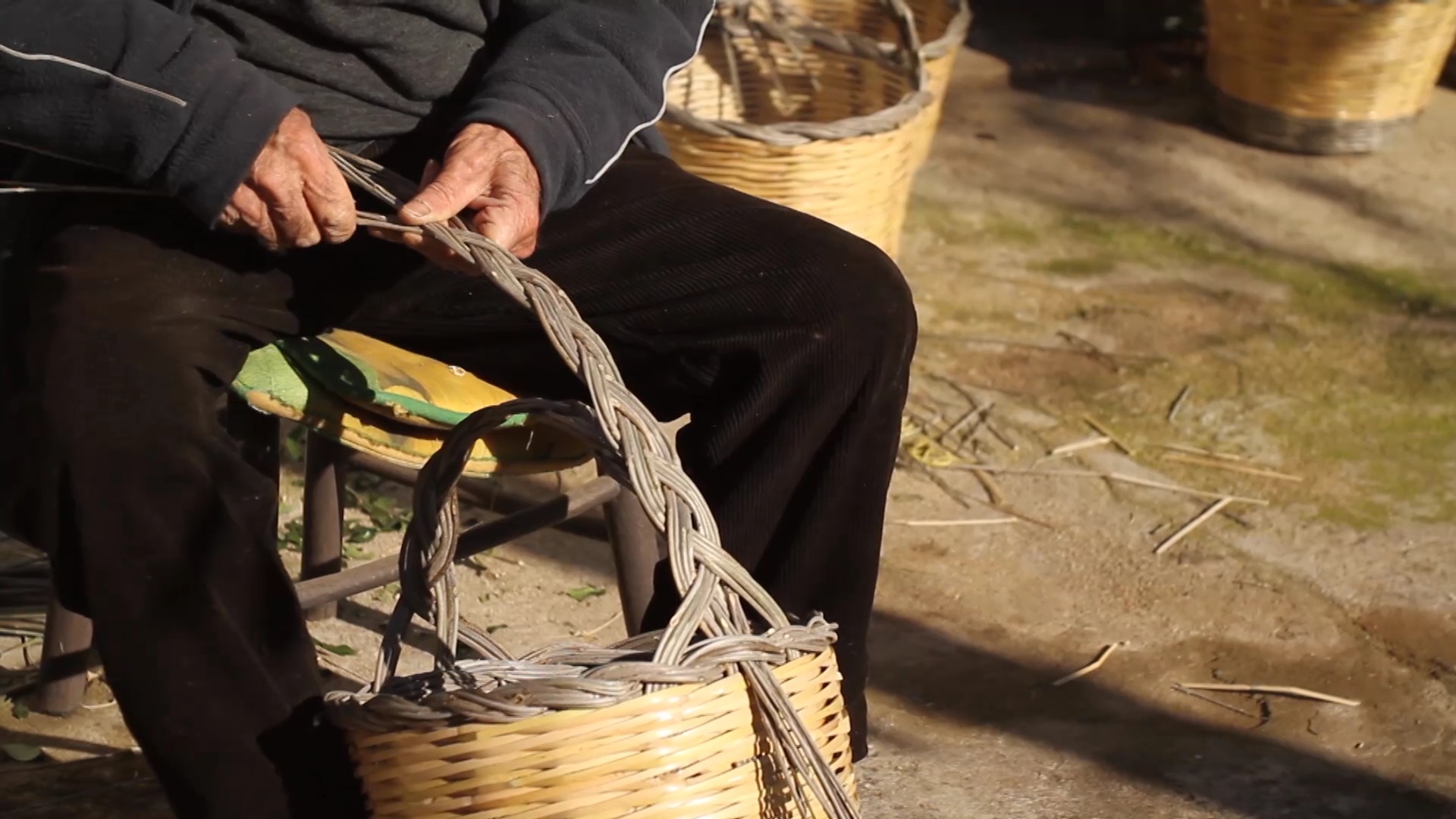
Based on the different arrangement of weaves, two main categories of compositional techniques may be found in Sardinia: spiral structures and crossover structures.
The list also includes types of weaving used for home and workplace linings and "artistic" products (palm weaving in Easter time).
In crossover structures, the compositional rationale is to draw threads, through the warp, in different directions, based on an alternating design, downwards and upwards. Crossover weaves are available in different versions, depending on the different design of the weave.
This type of design is featured in country and work baskets, eel baskets, special linings for bottles and other pieces of furniture.
How to connect warps and wefts
− Simple Weave
This process consists of drawing in a weaver (weft element), first inside and then outside, the warp threads that make up the weave of the artefact.
− Double Weave
This process consists of drawing in a couple of paired weavers inside and outside the warp threads that make up the weave of the artefact.
- Weave crafted with two plaited weavers
The two ends of the weavers cross each other, drawing one inside and the other outside the warp that makes up the weave of the artefact.
− Weave crafted with three plaited weavers
It consists of intertwining three weaves. Two of them are drawn inside two consecutive warp threads and outside the third one. The third is drawn either inside or outside the warp.
− Multiple weaver diagonal weave
Weavers and warps are intertwined in equal number. Each of them is drawn in at the base of the artefact starting from a warp thread, and passes inside and outside diagonally. The second weaver follows the first, starting from the adjacent warp thread, followed by the first one. The same applies to the others.
- Trellis diagonal weave
It is another version of the previous one. Threads are intertwined with a "diagonal" technique, creating a trellis, without a solid texture.
− Wicker weaving
In this case, the weft is drawn through the warp alternatively, in such a way as to form a basic chequered structure that, depending on the design, can also feature polygonal geometric shapes, making it possible to create different decorative compositions. This technique is used to craft wickers, but also different types of weaves for chairs, bags and baskets.
In most of the goods crafted with this technique, wefts are similar in texture and consistency to warps.
Organic materials
Cultivated reed (Arundo donax): harvesting is carried out at the end of winter. One-year old reeds are chosen;
As for oleaster (Olea europea), elm (Ulmus minor), mastic (Pistacia lentiscus), willow (Salix viminalis, Salix purpurea, Salix trianda, Salix alba), myrtle (Myrtus communis), mock privet (Phyllirea latifoglia), wild broom (Genista corsica), the suckers that sprouted during the year are eradicated.
preliminaries: preparing threads
Preparation of wicker and other fibres
The wicker fiber (flexible young branches of some species of willow tree) may be prepared in the following ways:
− raw artefacts - the branches and their bark are dried in ventilated and dehumidified indoor spaces. The colour of the branches turns brown.
− refined products - branches are boiled, so that the tannin their bark contains, dyes the wood. The bark is then removed. A solid darker colour is obtained; − branches are soaked in water during all winter, and their bark is removed in spring, as soon as the fibers turn to a light colour.
Preparation of reeds
The reed is cut and the crinite outer layer is removed. The thin and flexible stalk is cut into strips. It is divided starting from the thinnest end, first half longways along the diameter, then each half is cut into 3-5 mm wide strips, and then stacked. Over time, reeds dry up, losing elasticity and flexibility. It is also necessary to rehydrate the reeds before intertwining them, by soaking them in water for about 10 minutes. In this way, the fiber regains its elasticity and malleability.
Tools used
The crafting of crossover weaves requires the use of the following tools:
- shears (pruning scissors) to cut the processing residues and refine warp fibres;
- knife (s'arresoia) with a well sharpened tip, used to remove unnecessary parts from the fibers or the bark from the medullary portion of the plant;
- pruning hook, it is useful to cut and sharpen larger rods and especially during the finishing phase;
(from Disciplinare di Produzione Intreccio Artigiano, Regione Autonoma della Sardegna)

